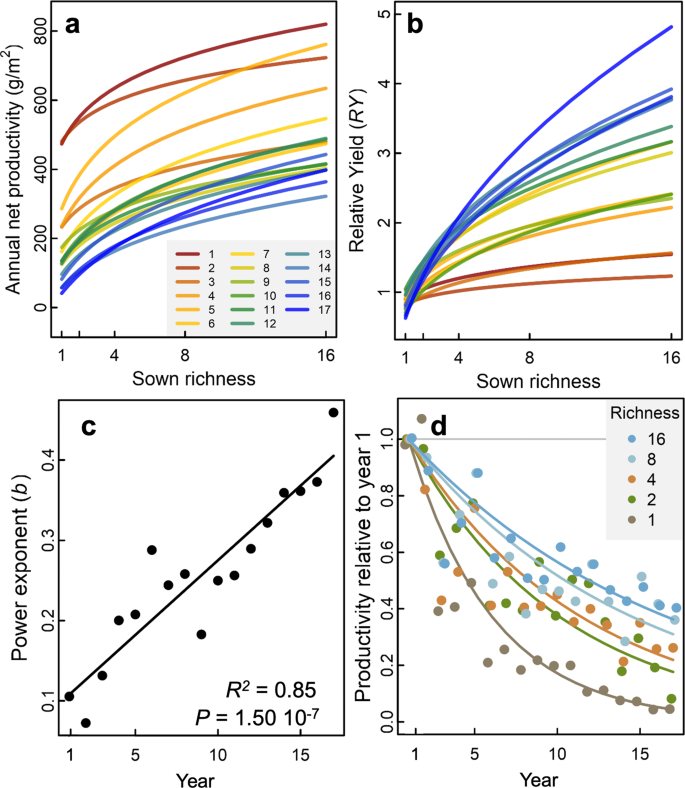New publication from Wagg et al. in Nature Communication: Biodiversity–stability relationships strengthen over time in a long-term grassland experiment
Numerous studies have demonstrated that biodiversity drives ecosystem functioning, yet how biodiversity loss alters ecosystems functioning and stability in the long-term lacks experimental evidence. We report temporal effects of species richness on community productivity, stability, species asynchrony, and complementarity, and how the relationships among them change over 17 years in a grassland biodiversity experiment. Productivity declined more rapidly in less diverse communities resulting in temporally strengthening positive effects of richness on productivity, complementarity, and stability. In later years asynchrony played a more important role in increasing community stability as the negative effect of richness on population stability diminished. Only during later years did species complementarity relate to species asynchrony. These results show that species complementarity and asynchrony can take more than a decade to develop strong stabilizing effects on ecosystem functioning in diverse plant communities. Thus, the mechanisms stabilizing ecosystem functioning change with community age.

Reference:
Wagg, C., Roscher, C., Weigelt, A. et al. Biodiversity–stability relationships strengthen over time in a long-term grassland experiment. Nat Commun 13, 7752 (2022). https://doi.org/10.1038/s41467-022-35189-2



